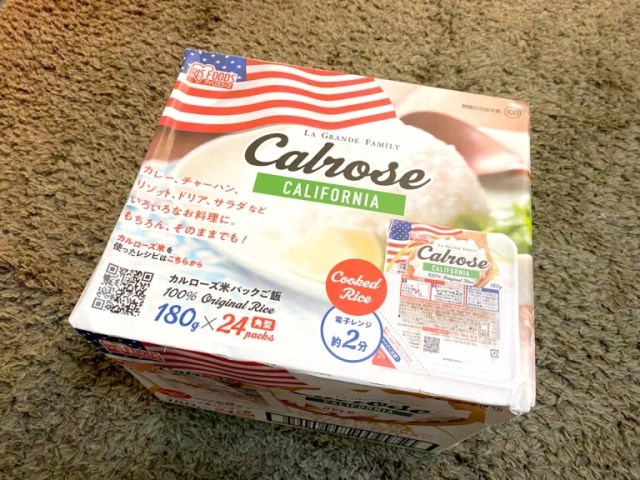
His friend warned him about Calrose rice. Should he have listened?
As someone born and raised in Japan, our Japanese-language reporter P.K. Sanjun eats a lot of rice. And while his favorite way to eat it is, of course, fresh out of the rice cooker, like a lot of Japanese people he also likes to keep a few microwavable rice packs in his apartment, just in case he doesn’t have time to cook a pot of grains before hunger hits.
So on his most recent trip to Costco, P.K. was looking to pick up some rice packs, when he came across a variety he’d never noticed before.
As you can probably guess from the American flag, Calrose rice isn’t grown in Japan, and the first part of its name comes from “California,” the West Coast American state where it is grown. P.K. was a little worried, though, because even though he’s never eaten Calrose rice himself, he has a Japanese friend who’s currently living in the U.S., and said friend wasn’t impressed when he tried it.
“I’d rate it as thoroughly mediocre, or maybe below-average,” P.K.’s friend had told him. “I buy THE MOST expensive rice you can get here, the Tamaki Gold, and Calrose is a lot cheaper. Don’t compare it to Japanese rice. When I go back to Japan, even the average rice tastes so good to me.”
Not exactly the most glowing endorsement, but then again, they say there’s no accounting for personal taste. P.K. felt a little reassured when he saw that Costco’s Calrose rice packs are specifically produced for Iris Ohyama, a Japanese trading company, since it suggested that at least someone at the company thought Calrose rice would be pleasing to Japanese people’s palates.
But what really sealed the deal was the price. The Calrose rice packs come in a 24-pack box for 1,498 yen (US$13.15). That works out to just about 62 yen each, which is an amazingly cheap price for rice packs in Japan. With each pack having 180 grams (6.3 ounces) of rice, he’d be getting 4.32 kilos for 1,498 yen, pretty much about the same price as he’d pay for a sack of rice in a Japanese supermarket of that size that he’d have to go through the trouble and time of cooking.
So P.K. took the plunge and bought the box, figuring that if the Calrose rice really did taste all that bad, he could just feed the remaining packs to Mr. Sato or something.
Doing a little online research on his way home, P.K. learned that Calrose is a medium-grain Japonica rice, and the Japanese-language website of the USA Rice Foundation describes it as something of a midpoint between Japan’s domestic short-grain varieties and the long-grain Thai-style jasmine rice that also has a lot of fans in Japan.
After tearing back a corner of the wrapping to the dotted line, P.K. popped the pack in the microwave for two minutes, then grabbed his chopsticks for the tasting…
…and it took exactly one bite for P.K. to learn that he and his friend have some very different opinions about rice. “Calrose rice isn’t bad at all!” P.K. says. “It’s honestly really good! It’s a touch on the airy side, but it has a nice, subtle sweetness. I don’t know if I’d want to just eat a bowl of it by itself with nothing else, but there’s no way you can say it tastes bad. It’d be a great rice to use with curry, and even though the grains are longer than Japanese rice, it’s not really something you notice very much while you’re chewing.”
On the 1-to-5 P.K. scale, the Calrose rice packs get near-perfect 4s in both the “I’d recommend this” and “I’d buy this again” categories. “The flavor is above and beyond ‘OK,’ and taking the price into account, these might be the best possible rice packs to keep on hand,” he says.
So all in all, a much smarter choice than that giant chocolate egg P.K. got on one of his previous Costco runs.
Photos ©SoraNews24
● Want to hear about SoraNews24’s latest articles as soon as they’re published? Follow us on Facebook and Twitter!
[ Read in Japanese ]
Follow Casey on Twitter as he continues to try to pull California and Japan closer to each other.
[ Read in Japanese ]

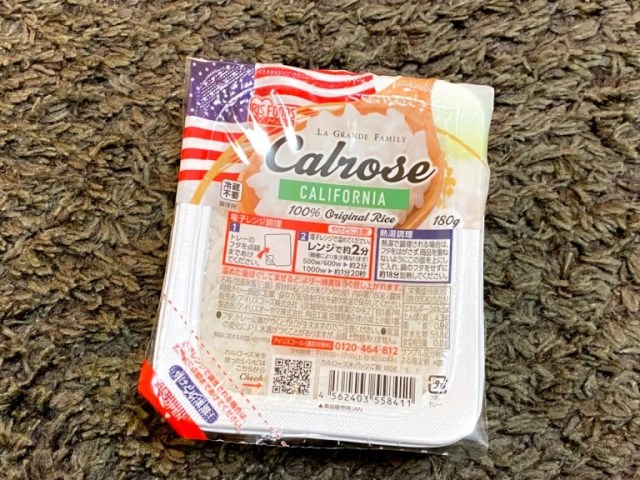
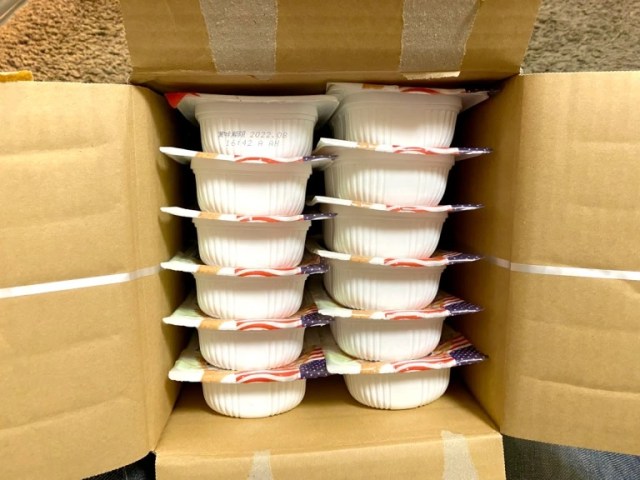
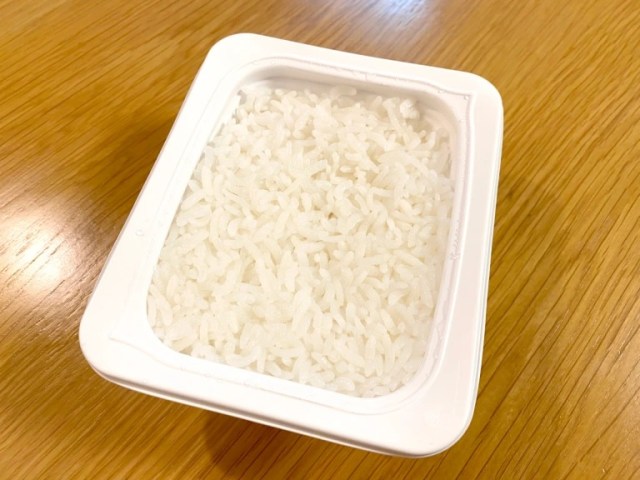
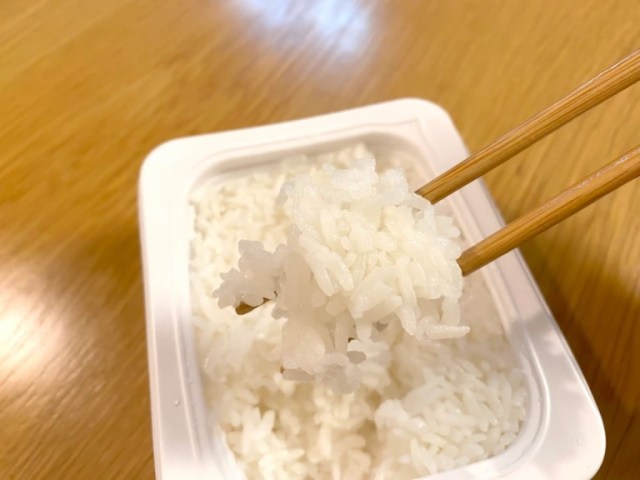
 Taco rice at Japanese beef bowl chain Sukiya proves you can never eat a bad taco rice
Taco rice at Japanese beef bowl chain Sukiya proves you can never eat a bad taco rice The best place to eat Japanese breakfast for US$2: Cheap food hack for locals and tourists
The best place to eat Japanese breakfast for US$2: Cheap food hack for locals and tourists Taste testing 7-Eleven Japan’s five frozen curries to see which ones nail it
Taste testing 7-Eleven Japan’s five frozen curries to see which ones nail it Our Japanese reporter visits Costco in the U.S., finds super American and very Japanese things
Our Japanese reporter visits Costco in the U.S., finds super American and very Japanese things The twin joys and dual sadnesses of eating ramen in the U.S.
The twin joys and dual sadnesses of eating ramen in the U.S. McDonald’s new Happy Meals offer up cute and practical Sanrio lifestyle goods
McDonald’s new Happy Meals offer up cute and practical Sanrio lifestyle goods All-you-can-drink Starbucks and amazing views part of Tokyo’s new 170 meter-high sky lounge
All-you-can-drink Starbucks and amazing views part of Tokyo’s new 170 meter-high sky lounge Beautiful Sailor Moon manhole cover coasters being given out for free by Tokyo tourist center
Beautiful Sailor Moon manhole cover coasters being given out for free by Tokyo tourist center Kyoto’s 100 Demons yokai monster parade returns!
Kyoto’s 100 Demons yokai monster parade returns! Super Nintendo World expansion gets delayed for several months at Universal Studios Japan
Super Nintendo World expansion gets delayed for several months at Universal Studios Japan Studio Ghibli releases new action figures featuring Nausicaä of the Valley of the Wind characters
Studio Ghibli releases new action figures featuring Nausicaä of the Valley of the Wind characters One-of-a-kind Osaka-themed Uniqlo Shinsaibashi opens
One-of-a-kind Osaka-themed Uniqlo Shinsaibashi opens McDonald’s Japan releases a pancake pie for new retro kissaten coffeeshop series
McDonald’s Japan releases a pancake pie for new retro kissaten coffeeshop series There’s a park inside Japan where you can also see Japan inside the park
There’s a park inside Japan where you can also see Japan inside the park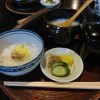 Enjoy Kyoto (Part 3) — The ultimate breakfast? Try $45 rice porridge at a 400-year-old restaurant
Enjoy Kyoto (Part 3) — The ultimate breakfast? Try $45 rice porridge at a 400-year-old restaurant More foreign tourists than ever before in history visited Japan last month
More foreign tourists than ever before in history visited Japan last month Disney princesses get official manga makeovers for Manga Princess Cafe opening in Tokyo
Disney princesses get official manga makeovers for Manga Princess Cafe opening in Tokyo Starbucks reopens at Shibuya Scramble Crossing with new look and design concept
Starbucks reopens at Shibuya Scramble Crossing with new look and design concept Beautiful new Final Fantasy T-shirt collection on the way from Uniqlo【Photos】
Beautiful new Final Fantasy T-shirt collection on the way from Uniqlo【Photos】 Is the new Shinkansen Train Desk ticket worth it?
Is the new Shinkansen Train Desk ticket worth it? Foreign English teachers in Japan pick their favorite Japanese-language phrases【Survey】
Foreign English teachers in Japan pick their favorite Japanese-language phrases【Survey】 Studio Ghibli glasses cases let anime characters keep an eye on your spectacles
Studio Ghibli glasses cases let anime characters keep an eye on your spectacles Studio Ghibli releases Kiki’s Delivery Service chocolate cake pouches in Japan
Studio Ghibli releases Kiki’s Delivery Service chocolate cake pouches in Japan Japan’s bone-breaking and record-breaking roller coaster is permanently shutting down
Japan’s bone-breaking and record-breaking roller coaster is permanently shutting down New definition of “Japanese whiskey” goes into effect to prevent fakes from fooling overseas buyers
New definition of “Japanese whiskey” goes into effect to prevent fakes from fooling overseas buyers Our Japanese reporter visits Costco in the U.S., finds super American and very Japanese things
Our Japanese reporter visits Costco in the U.S., finds super American and very Japanese things Studio Ghibli unveils Mother’s Day gift set that captures the love in My Neighbour Totoro
Studio Ghibli unveils Mother’s Day gift set that captures the love in My Neighbour Totoro Domino’s Japan now sells…pizza ears?
Domino’s Japan now sells…pizza ears? New Japanese KitKat flavour stars Sanrio characters, including Hello Kitty
New Japanese KitKat flavour stars Sanrio characters, including Hello Kitty One of Tokyo’s most famous meeting-spot landmarks is closing for good
One of Tokyo’s most famous meeting-spot landmarks is closing for good Kyoto creates new for-tourist buses to address overtourism with higher prices, faster rides
Kyoto creates new for-tourist buses to address overtourism with higher prices, faster rides Sales of Japan’s most convenient train ticket/shopping payment cards suspended indefinitely
Sales of Japan’s most convenient train ticket/shopping payment cards suspended indefinitely Sold-out Studio Ghibli desktop humidifiers are back so Totoro can help you through the dry season
Sold-out Studio Ghibli desktop humidifiers are back so Totoro can help you through the dry season Japanese government to make first change to romanization spelling rules since the 1950s
Japanese government to make first change to romanization spelling rules since the 1950s Ghibli founders Toshio Suzuki and Hayao Miyazaki contribute to Japanese whisky Totoro label design
Ghibli founders Toshio Suzuki and Hayao Miyazaki contribute to Japanese whisky Totoro label design Doraemon found buried at sea as scene from 1993 anime becomes real life【Photos】
Doraemon found buried at sea as scene from 1993 anime becomes real life【Photos】 Tokyo’s most famous Starbucks is closed
Tokyo’s most famous Starbucks is closed One Piece characters’ nationalities revealed, but fans have mixed opinions
One Piece characters’ nationalities revealed, but fans have mixed opinions We asked a Uniqlo employee what four things we should buy and their suggestions didn’t disappoint
We asked a Uniqlo employee what four things we should buy and their suggestions didn’t disappoint Princesses, fruits, and blacksmiths: Study reveals the 30 most unusual family names in Japan
Princesses, fruits, and blacksmiths: Study reveals the 30 most unusual family names in Japan Sushi tacos now on sale in Japan — Can this cross-cultural cuisine please our biggest taco fan?
Sushi tacos now on sale in Japan — Can this cross-cultural cuisine please our biggest taco fan? How to turn leftover tempura into fried rice (or why to buy all the takeout tempura you can)
How to turn leftover tempura into fried rice (or why to buy all the takeout tempura you can) Why hayashi rice should be your last meal before leaving Japan
Why hayashi rice should be your last meal before leaving Japan The Unagyu Burger Kit’s ultra expensive/ultra cheap mixture is here, and it’s time to taste test it
The Unagyu Burger Kit’s ultra expensive/ultra cheap mixture is here, and it’s time to taste test it Tokyo restaurant’s crazy huge rice omelet has 600 grams (1.3 pounds) of rice
Tokyo restaurant’s crazy huge rice omelet has 600 grams (1.3 pounds) of rice Sukiyabashi Jiro Sushi Rice: How good is rice from Japan’s legendary sushi restaurant?
Sukiyabashi Jiro Sushi Rice: How good is rice from Japan’s legendary sushi restaurant? Edible culture shock: Our Japanese reporter tries American barbecue for first time【Taste test】
Edible culture shock: Our Japanese reporter tries American barbecue for first time【Taste test】 We get to be (probably) the first ever to try Nissin Cup Noodle’s latest creation: Gyoza ramen!
We get to be (probably) the first ever to try Nissin Cup Noodle’s latest creation: Gyoza ramen! How much more expensive is it to use microwave rice packs instead of cooking/freezing your own?
How much more expensive is it to use microwave rice packs instead of cooking/freezing your own? Extreme budget travel! Can you do a good weekend trip to Taiwan with 50,000 yen (US$370)? – Part 2
Extreme budget travel! Can you do a good weekend trip to Taiwan with 50,000 yen (US$370)? – Part 2 We turn Japanese bamboo shoot rice dish into a delectable dessert【RocketKitchen】
We turn Japanese bamboo shoot rice dish into a delectable dessert【RocketKitchen】 Are the new shrimp nuggets from McDonald’s Japan better than chicken McNuggets?
Are the new shrimp nuggets from McDonald’s Japan better than chicken McNuggets? Our Japanese reporter’s experience with crawfish in the US left him stunned
Our Japanese reporter’s experience with crawfish in the US left him stunned Taco Bell Japan’s DIY Tacos Kit gives us what we want and more
Taco Bell Japan’s DIY Tacos Kit gives us what we want and more Which Japanese conveyor belt sushi chain has the best salmon sushi?【Taste test】
Which Japanese conveyor belt sushi chain has the best salmon sushi?【Taste test】 Which Japanese convenience store has the best premium pork buns?
Which Japanese convenience store has the best premium pork buns?
Leave a Reply